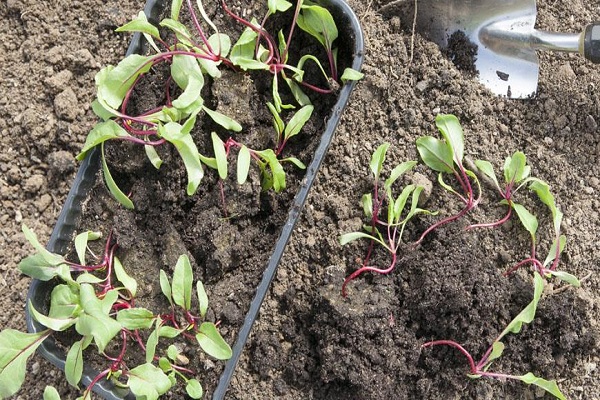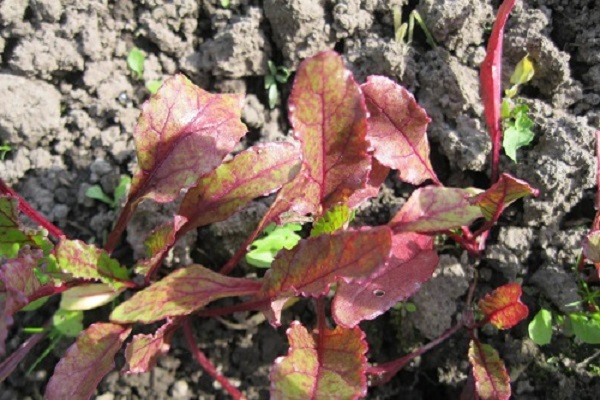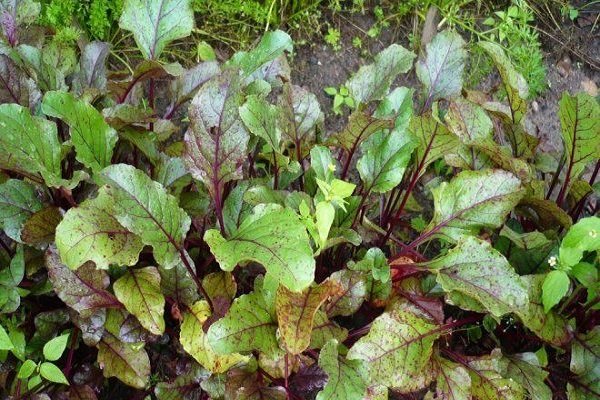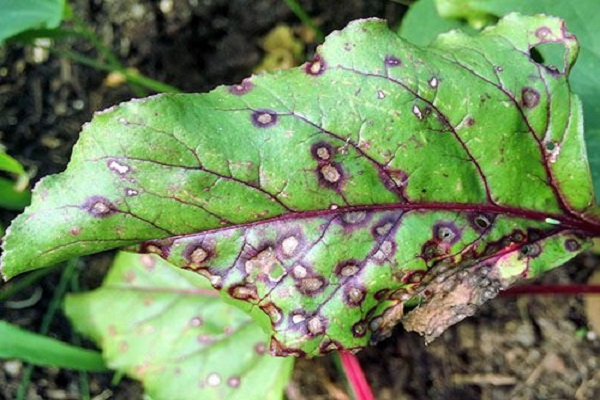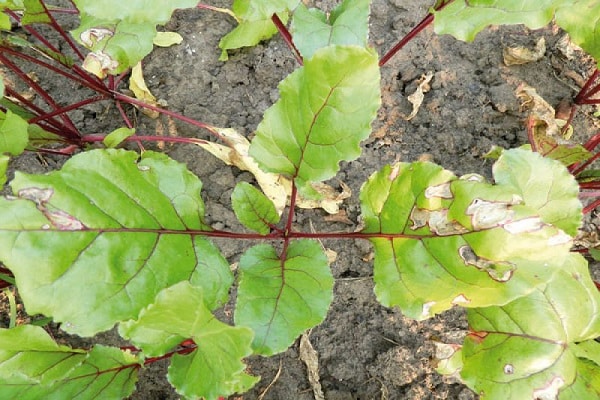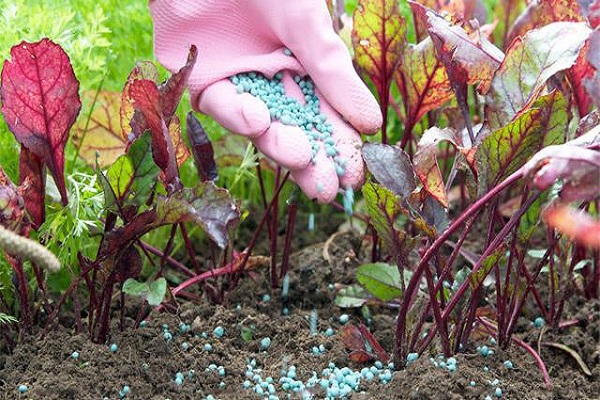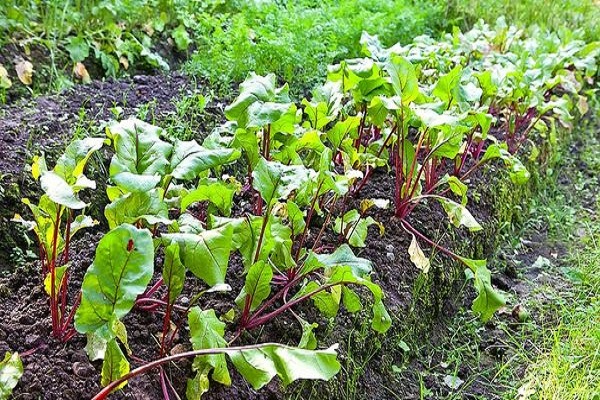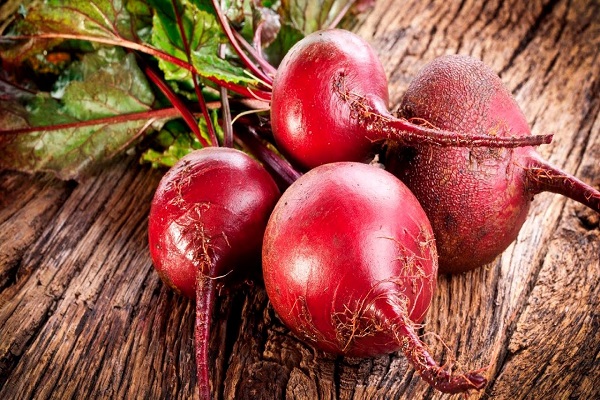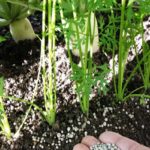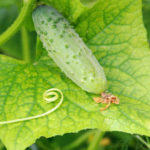Changes in the color of vegetable leaves often indicate disease or poor growing conditions. By understanding why beet leaves turn red and what to do in such a situation, you can avoid problems with the future harvest.
About growing beets
The plant is not a difficult crop to care for. Beet seedlings of any variety, within a couple of months after planting, produce an abundant harvest of root crops with a minimum of fertilizer use. Loamy soils are a suitable option for growing vegetables.
You can simply plant the crop in dry and warm soil. Beet seeds may have not just one, but several embryos, so timely thinning is the key to ensuring that young shoots do not interfere with each other’s growth.
The growth of seedlings may slow down or even stop due to strong temperature fluctuations, which will negatively affect the future harvest. Before you spend beet transplantation in open ground, the soil should be watered abundantly.
The crop should be planted at a distance equal to the diameter of the future root crop that is supposed to be grown. Harvest should be done when the formed vegetable reaches the required size, the leaves become coarse, and the skin is tough. Beet harvesting from the garden ahead of schedule will lead to poor preservation of root crops and a deterioration in their taste.
The crop is not afraid of many diseases characteristic of other vegetables, and its seedlings are more resistant to pests. You can also forget about fighting weeds - she is not afraid of them.
Growing beets is a fairly simple process. Culture is not afraid of anything, it is not afraid of anything. But a healthy plant is purple; if the beets acquire a reddish tint to the leaves, this may indicate problems.
Causes of leaf color change
When red leaves appear on beets, you should carefully understand the reasons for this phenomenon. The tops may not only turn red, but also become yellow, purple, or acquire a brownish or gray tint. All the negativity of the environment that negatively affects the growth of the plant can manifest itself in a change in the color of the leaves. Some leaves may turn red beet varieties maybe due to excess irrigation.
There is only one criterion for identifying problems - if there are no delays or growth retardation, then everything is fine; if there is a slowdown or stop in development, then you need to urgently look for why the color of the tops is changing.
Why beet leaves turn red: what to do
There may be several reasons why beet leaves turn red.
The most common factor is soil acidity. Soils with a neutral index are suitable for vegetables. To determine the acidity level of the soil, litmus paper is used. A method using baking soda and vinegar concentrate is also suitable. If the soil turns out to be acidic, it is neutralized with wood ash.
Another reason for a change in color may be a lack of chemical elements necessary for nutrition and growth. A deficiency of sodium, potassium or phosphorus leads to reddening of beet leaves. The deficiency of each element has its own characteristic manifestations. Carrying out periodic fertilizing with the missing elements will eliminate their deficiency.
The most difficult problem is a fungal disease called cercospora. Dealing with it is not so easy. Symptoms of the disease: the tops are covered with dry dark burgundy spots with a brown tint (which eventually turn into holes), as well as reddening of the edges of the leaves with the formation of a border.
Mycosis, which most often attacks from mid-July or August, can easily destroy half the crop. The main thing is to immediately take measures to save the plants.
You can dig up the soil to 20 cm. This will kill the fungus. In addition, it is recommended to spray every week. Products that contain copper are suitable. You can use carticide, Bordeaux mixture and other drugs.
After harvesting, we must not forget to thoroughly clean the beds from the remains of grown crops.
If the plant and leaves become covered with spots and become covered with spots, it needs to be treated; the crop became covered in blisters and began to become covered with red spots - experienced gardeners advise not to worry and calmly figure out why this happened in order to quickly solve the problem.
Causes of yellowing leaves
It happens that beet leaves change color to yellow. The most common reason for this phenomenon is lack of moisture. If the yellow color of the leaves begins at the veins and gradually reaches the edges, then the matter is most likely due to nitrogen deficiency. Fertilizing the soil with an aqueous solution of cow or bird droppings will help solve the problem.
How to help beets
Depending on the reasons for the change in color of the tops, you need to act to save most of the future harvest. In one case, fertilizing and watering will help; Watering the plant with drugs against fungus and pests will be enough in another case.
Lack of sodium
Since a lack of sodium also leads to redness of the tops, treatment with a saline solution will increase the content of this element in the soil. Ordinary kitchen salt is suitable, which must be diluted with water in a proportion of 250 g per bucket of water.
Manganese and sodium deficiency are common causes of red beet leaves. It is enough to replenish these batteries to eliminate the problem.
Phosphorus and potassium
Reddening of beet leaves may also be associated with a deficiency of other microelements. Phosphorus is an important element for ensuring normal plant growth. With its deficiency, the leaves darken, become dull and then turn red.
This problem is more difficult to cope with, however, with the help of appropriate fertilizing, the situation can be improved. An excellent option would be to use superphosphate.
A symptom of potassium deficiency, in addition to redness, is curling of the leaves. Feeding with preparations containing potassium and treatment with wood ash is necessary.
The situation can be corrected. The main thing is to follow the dosage correctly.
Soil acidity
Beets are best cultivated in fertilized soils with neutral acidity. If it turns out that its level in the area is elevated, the acidic soil must be limed.
To neutralize the soil, you can use wood ash, which will not only reduce acidity, but also help beets in growth and development.
How to grow beautiful beets?
The process of growing a vegetable, like any other crop, has its own characteristics. In order to get a good harvest, you need to follow proper care rules and show care and hard work at every stage; Regularly water and fertilize.
In this case, the fertilizer consumption should be such as to provide the beets with the required amount of essential microelements. Caring for young and fragile plants will bear fruit in the future, when harvesting.

